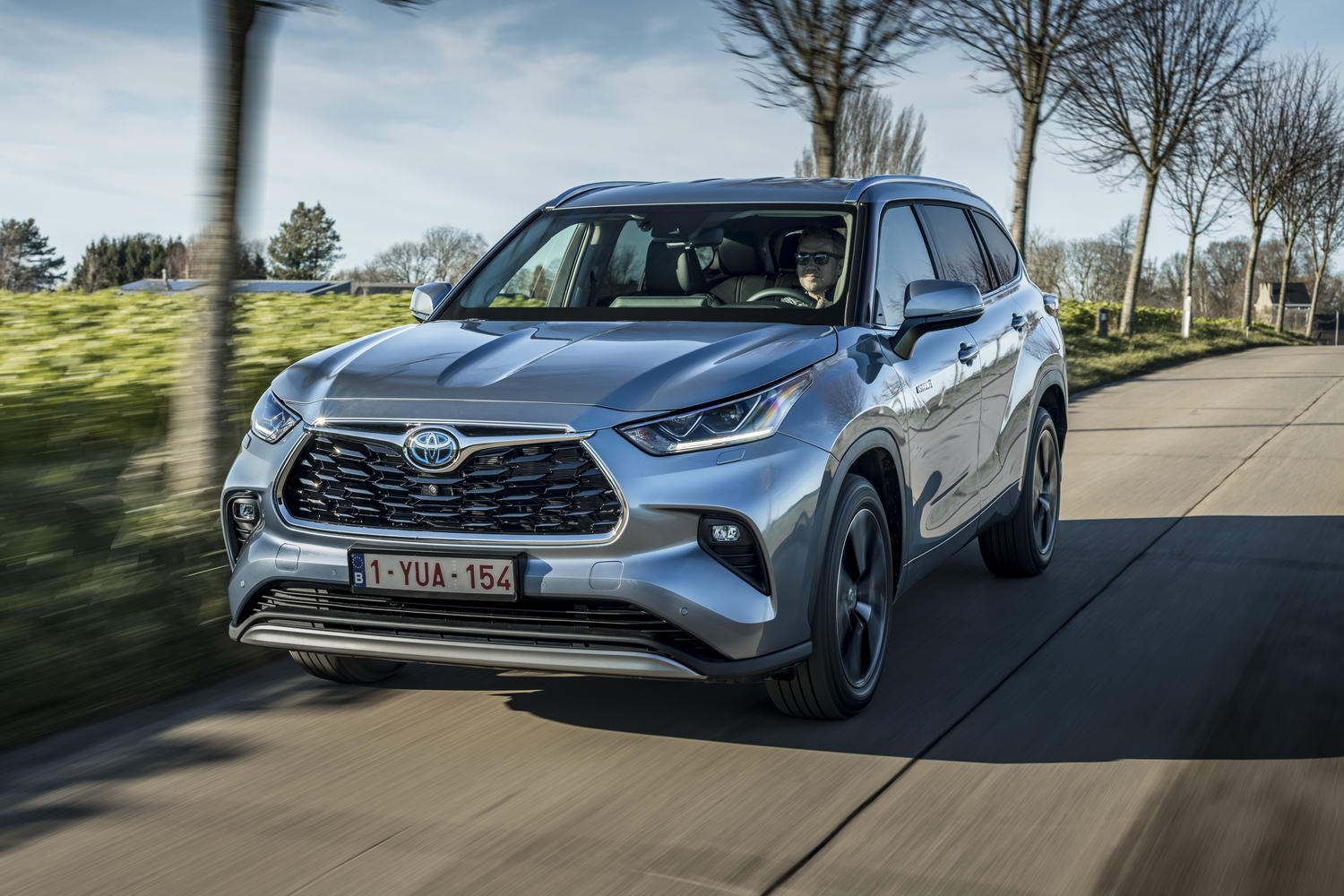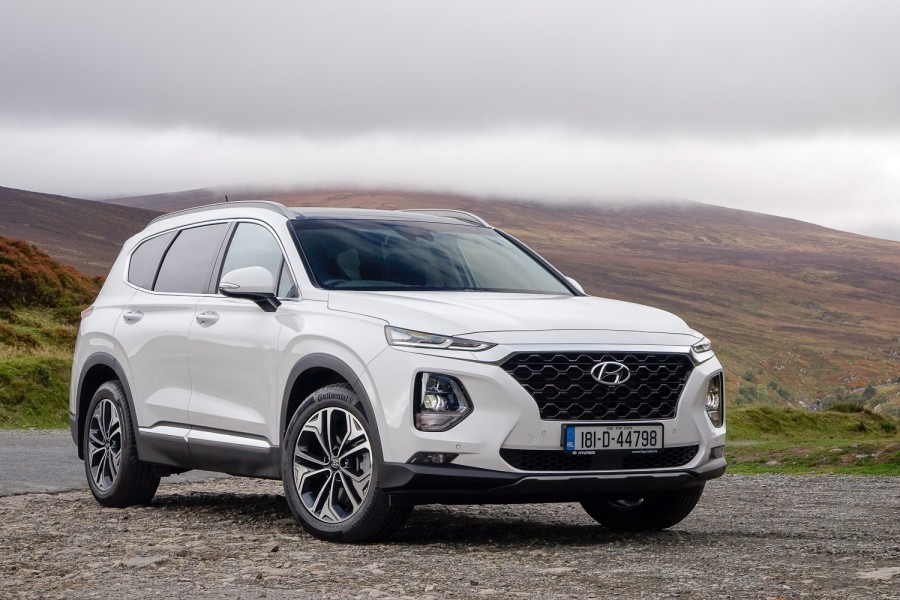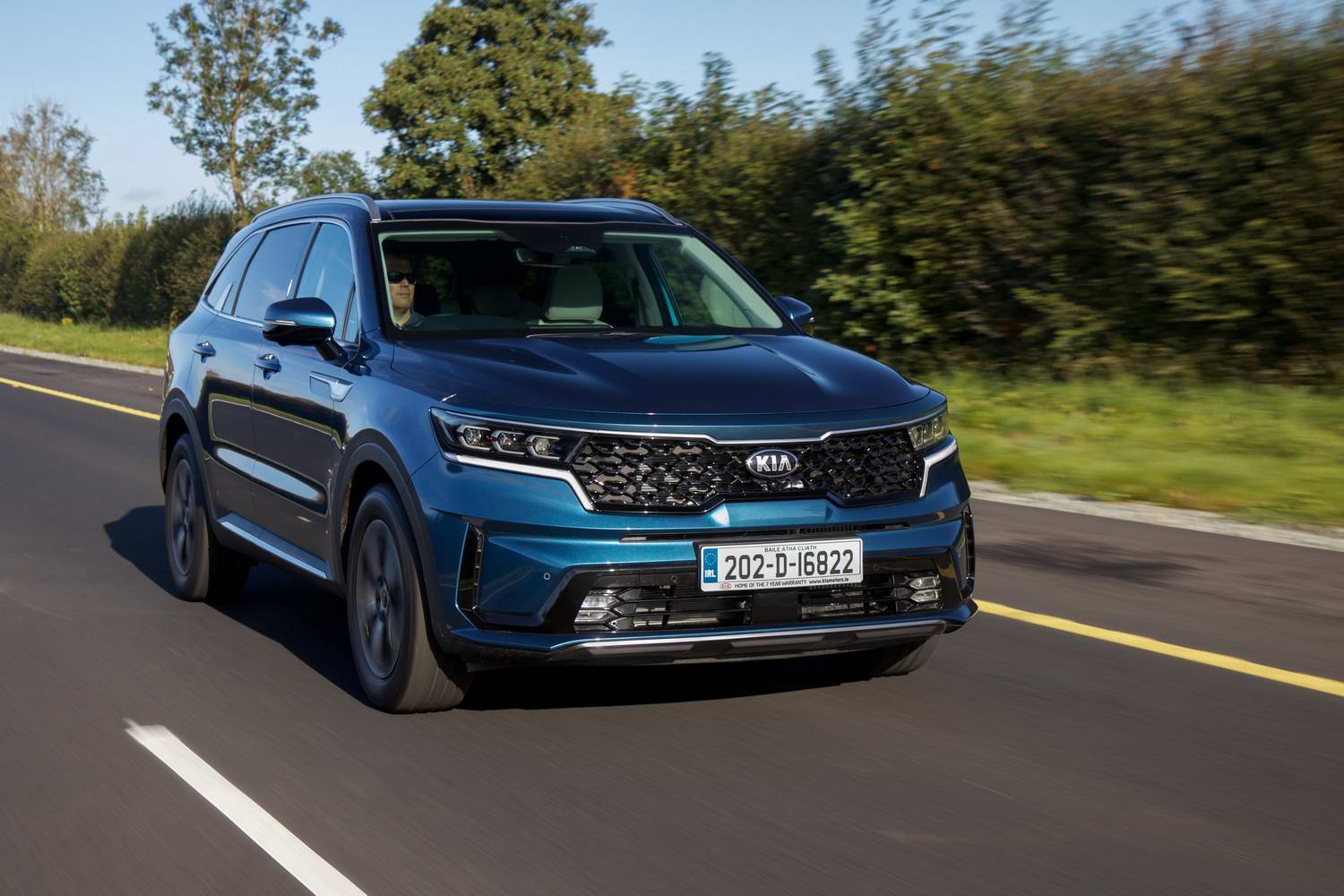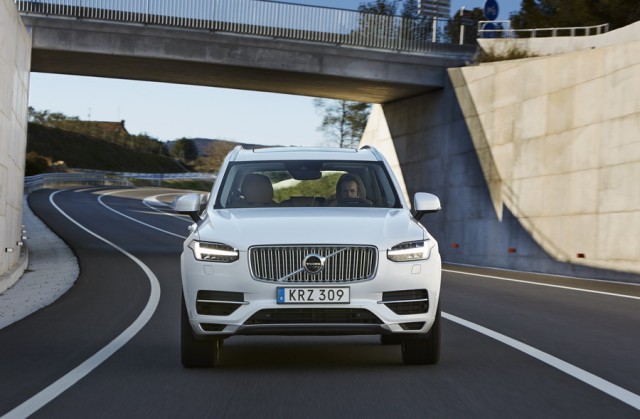The Toyota Highlander is a new model for the Irish market. Based on the same platform as the Toyota Camry, the Highlander is a seven-seat, hybrid-only, four-wheel-drive SUV. Although it has got an all-wheel-drive system, it's best to think of the Highlander as a road-biased family SUV rather than a 4x4 workhorse like the Toyota Land Cruiser. Indeed, Toyota's pricing indicates that it sees the new entrant as a premium product. Is its introduction well-timed, now that more people than ever are buying hybrid, or is the market for large SUVs already saturated with good options?
In the metal
While I find the rear of the Highlander exceedingly bland to look at, the front view is considerably better. It takes the design language of the current Toyota RAV4 as a starting point, which helps visually shrink the Highlander, but it still has a lot of presence, thanks in no small part to the slim, sharply drawn headlights and the air vents pushed out the extremities of the front bumper. Our Platinum-spec test car rode on 20-inch alloys, too, and only the entry-level model wears smaller.
Whatever you think of the exterior of the Highlander, its cabin is what will matter most to the family buyers it's aimed at. A seven-seat layout is standard, and it's a spacious one, too. The second-row seats slide fore and aft, and their backrests tilt, as well. At their furthest back, there's stretching room for adults, though the middle seat's base brings its occupant's head closer to the roof. The floor is almost flat, though. Rear-seat climate control is standard across the range, with heated rear seats on this Platinum version.
The backrests of the rearmost seats can be adjusted, too, though the bases are right on the floor, so taller passengers will need to ask those in front to slide their seat forward. Behind that, however, the Highlander impresses, with a noticeably larger space for luggage than usually found at the back of seven-seat SUVs such as this.
Up front, the Highlander is comfortable and spacious, and packed with toys. The perforated leather upholstery is top-notch and, while the dashboard isn't the most swoopy or cohesive looking, it is festooned with cleverly designed oddments space, including a cavernous multi-layer volume under the central armrest. In terms of quality, while the Highlander stops short of competing with the likes of Lexus when it comes to tactile material selection, it feels solidly built.
Driving it
Electric adjustment of the driver's seat is standard on the Highlander, but even in its lowest setting you get a distinctly raised view out. Indeed, visibility is great in all directions thanks to the large windows and upright profile of the car. On country roads, the elevated driving position is a real boon, allowing you see more of the road ahead at all times.
So long as you don't expect Toyota's newfound love of engaging-to-drive chassis to extend to this seven-seat family car, you won't be disappointed by the Highlander's dynamics. It is especially comfortable in regular driving, but the suspension stops short of being too soft to control unwanted wallowing about of the body. Up the pace and it's less impressive when the road surface gets bumpy, but fine on a smooth road.
Wind noise is commendably kept at bay (we noted double glazing on the side glass), and the relatively high-profile Dunlop tyres also manage to isolate road noise from the passengers, to a large extent.
Powering the Highlander is the latest iteration of Toyota's well-proven non-plug-in hybrid system. It utilises an efficient naturally aspirated 2.5-litre petrol engine that can produce up to 190hp, an electronically controlled Continuously Variable Transmission (CVT) gearbox and a 134kW (182hp) electric motor to drive the front wheels. At the back, meanwhile, is a more modest 40kW (54hp) electric motor, with no mechanical connection to the transmission up front. This gives the Highlander all-wheel drive.
Toyota calls this AWD-i (All-Wheel Drive-intelligent - as previously tested in the RAV4) and it alters the torque split front-to-rear depending on the conditions. The Highlander can run in front-wheel-drive mode at one extreme or with the rear motor providing up to 80 per cent of the torque at the other. On a loose surface, it was possible to overcome the front tyres' traction for a second before feeling the rear motor called into action, but in normal conditions the car just feels planted and secure, with a surfeit of grip and traction.
Along with Eco, Normal and Sport driving modes - which seem to alter only the gearbox and engine characteristics - the Highlander gets an EV button to maximise use of the battery pack with zero emissions, and a Trail setting for off-road driving.
For the most part, the engine is quiet, though the transmission allows it to rev up if you push the throttle down for hard acceleration. It has ample performance, though, and it's wonderfully hushed in traffic, where it whispers along in electric mode.
For the record, we averaged 8.9 litres/100km over a day that took in the M50 motorway a couple of times, a small amount of slow traffic and the rest of the time on the hilly roads of the Dublin Mountains.
What you get for your money
Given that there hasn't been a Toyota SUV in this sector of the Irish car market before, people might initially baulk at the pricing. The Highlander starts at €65,225 (or €506.13 per month on finance). That's about €18,000 more than the AWD-i RAV4, for reference, but it's a much larger car than that, comparable to the larger seven-seat offerings available, including the Land Rover Discovery and Volvo XC90.
To soften the blow somewhat, Toyota has been generous with equipment. At the entry level, for example, there's keyless entry and start, adaptive cruise control, heated and folding door mirrors, an eight-inch touchscreen infotainment system with rear-view camera, Apple CarPlay and Android Auto, three-zone climate control, wireless phone charging and a heated steering wheel. A massive suite of safety systems is also standard, as part of 'Toyota Safety Sense 2'.
Next up, for €71,350, is the Highlander Sol, which adds 20-inch alloy wheels, upgraded LED headlights with cleaners, leather upholstery, electric adjustment for the passenger's seat, a JBL sound system and a few other aesthetic tweaks.
Finally, the top-dog is the Highlander Platinum tested here. This gets its own design of alloy wheel, a panoramic glass roof, powered tailgate, ventilated front seats, head-up display and a few other luxuries.
Check the official www.toyota.ie website to up-to-date equipment and price details.
Summary
Many drivers are looking around for alternatives to diesel power for their next car, but not all are ready to transition to one that needs to be plugged in regularly. The Toyota Highlander offers the perfect solution, as a traditional hybrid that is quiet, clean and efficient around town, yet well able to travel longer distances without breaking the bank. Its spacious seven-seat layout and well-equipped cabin are sure to find favour with big families that can afford a little luxury, too. Toyota has timed the introduction of the Highlander well.


























